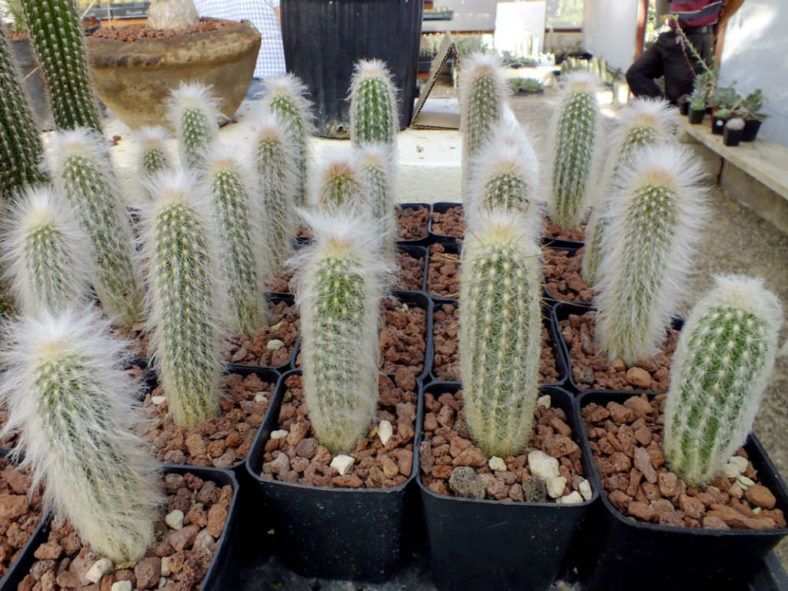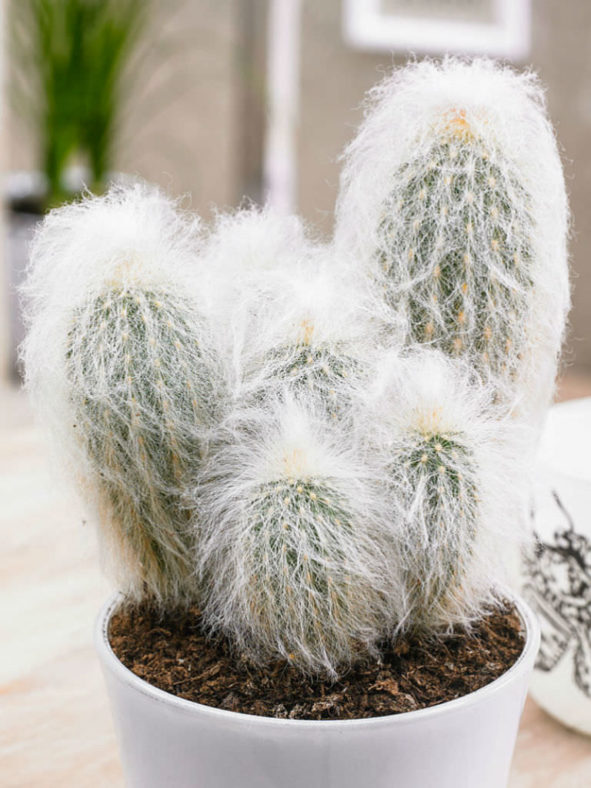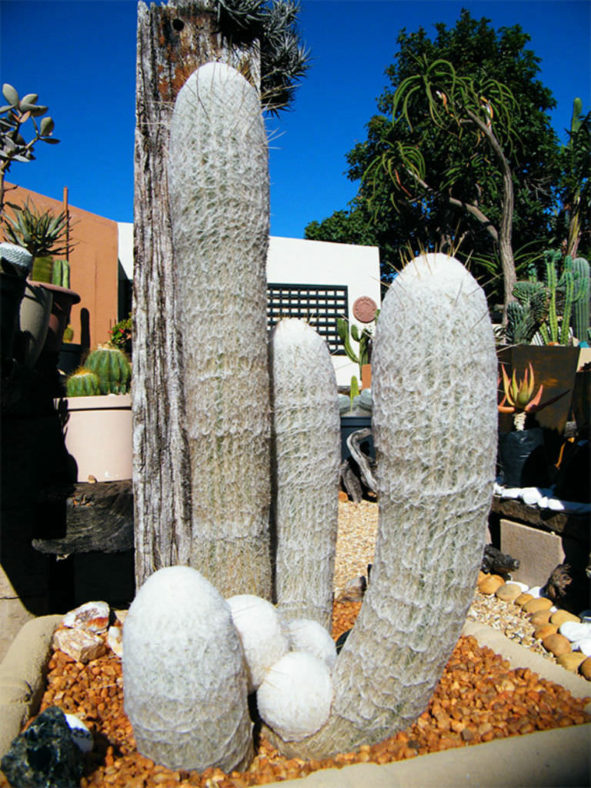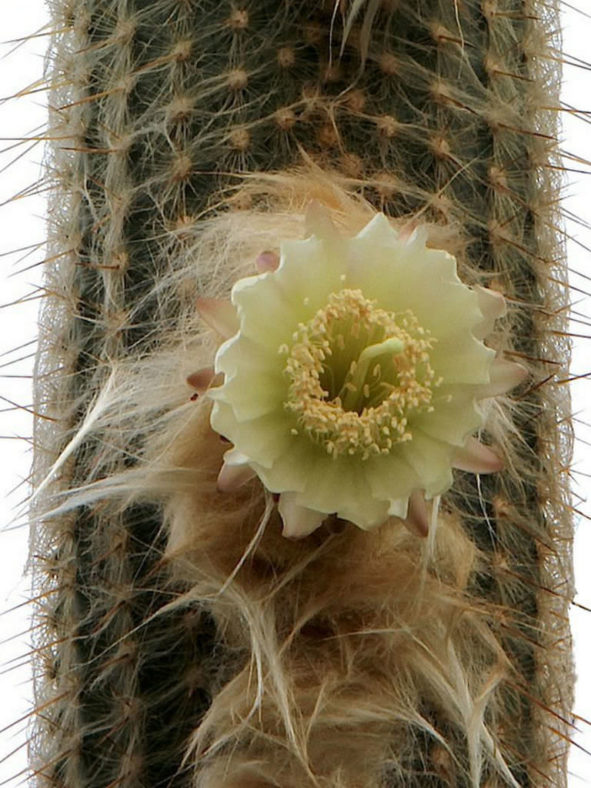Scientific Name
Espostoa lanata (Kunth) Britton & Rose
Common Name(s)
Cotton Ball Cactus, New Old Man Cactus, Peruvian Old Man, Peruvian Old Man Cactus, Peruvian Snowball Cactus, Snowball Cactus, Snowball Old Man
Synonym(s)
Cactus lanatus, Cereus lanatus, Cleistocactus lanatus, Espostoa lanata subsp. lanata, Oreocereus lanatus
Scientific Classification
Family: Cactaceae
Subfamily: Cactoideae
Tribe: Trichocereeae
Genus: Espostoa
Origin
The native range of Espostoa lanata is from southern Ecuador to northern Peru on the west slopes of the Andes mountains.
Description
Espostoa lanata is a large cactus with densely hairy stems, initially columnar, developing branches and becoming tree-like with age. It grows up to 23 feet (7 m) tall and 8 inches (20 cm) in diameter. The stems are cylindrical, with 18 to 25 sharp ribs lined with clusters of spines. The ribs and spines are mainly hidden by a woolly coat. Each areole bears 30 to 40 spreading, needle-shaped, up to 0.3 inches (0.8 cm) long, reddish or yellowish-brown radial spines that turn gray as they age. The central spines are usually absent, or sometimes one up to 1 inch (2.5 cm) long is present.
This cactus blooms at night from a lateral cephalium after several years. Flowers are funnel-shaped, up to 2.2 inches (5 cm) long and 1.4 inches (3.5 cm) in diameter, white to purple, and appear in late spring to early summer.
Espostoa lanata looks very similar to Cephalocereus senilis but can be distinguished by the presence of sharp spines.

Hardiness
USDA hardiness zones 9b to 11b: from 25 °F (−3.9 °C) to 50 °F (+10 °C).
How to Grow and Care
Several species of Espostoa are especially popular in cultivation due to their fuzzy white hairy appearance. Large commercial growers typically sell the plants as up to 12 inches (30 cm) tall stems. However, being large columnar species, these plants do not grow nearly as vigorously in pots as they would in the ground. Plants tend to fill the pots, quickly becoming pot-bound, and then growth slows to a crawl. These plants rarely, if ever, reach maturity, meaning they don't produce the cephalium and subsequently do not flower. On the other hand, those in warmer climates that can plant the species directly in the ground may indeed have plants that form a nice grouping of stems that will eventually flower.
Like all cacti, Espostoa requires a sunny location and well-drained soil. But in summer, it appreciates fertilizer and wetter conditions. In winter, it needs a rest, but the temperature must not drop below 54 °F (12 °C).
See more at How to Grow and care for Espostoa.
Links
- Back to genus Espostoa
- Succupedia: Browse succulents by Scientific Name, Common Name, Genus, Family, USDA Hardiness Zone, Origin, or cacti by Genus
Photo Gallery


